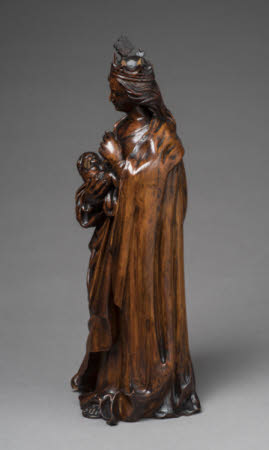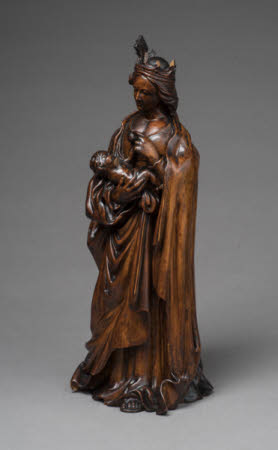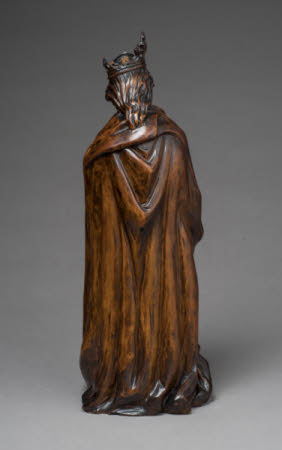The Virgin and Child
Category
Art / Sculpture
Date
1501 - 1599
Materials
Pearwood
Measurements
420 x 150 x 120 mm
Place of origin
Germany
Order this imageCollection
Knole, Kent
NT 130076
Summary
Pearwood, Virgin and Child, German, possibly 16th century. A stained pearwood statuette of the Virgin and Child. With one hand the Virgin cradles the Christ Child who holds up the ‘monde’ (globe), symbolising his role as Saviour. The pointed finger of her other hand rests gently on the ‘monde’. The Virgin is crowned and wears a long gown and mantle.
Full description
Statuettes of this type were produced as domestic devotional objects: small-scale, ‘intimate’ and ‘comparatively cheap’ (Baxandall 1967, p.1). Hardwood like box and pearwood were commonly used for small-scale figures and reliefs. After box, considered the finer of the two, pear, though ‘coarser’, was ‘the most frequently used material for the better class of statuette’ (Baxandall 1967, p.2). Its grain lent itself to the carving of drapery and detail, such as the Virgin’s gown, crown and hair. A similar pearwood statuette of the Virgin and Child from Augsburg (c.1600) is in the collection of the Victoria and Albert Museum, London (inventory no. 28-1881). Alice Rylance-Watson September 2018
Provenance
Transferred to the Government in lieu of inheritance tax and allocated to the National Trust for display at Knole, 1966.
Credit line
National Trust Collections (Knole, The Sackville Collection)
References
Baxandall 1967: Michael Baxandall, German wood statuettes 1500-1800, London 1967















